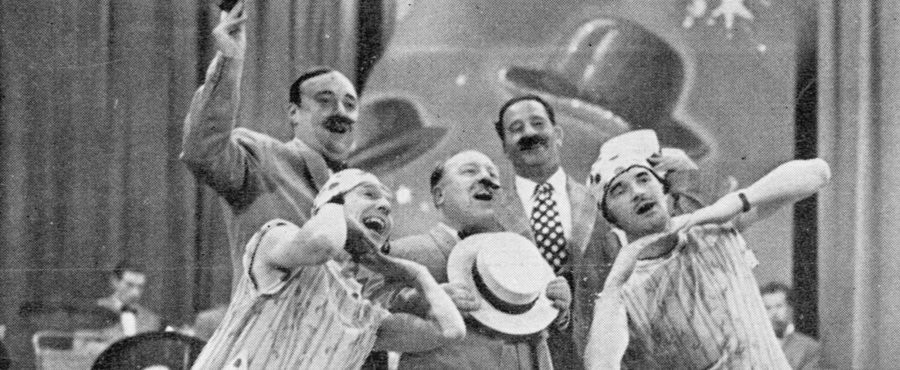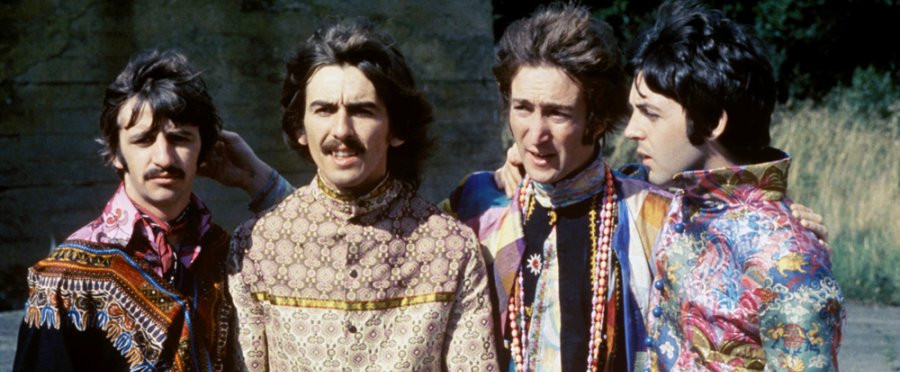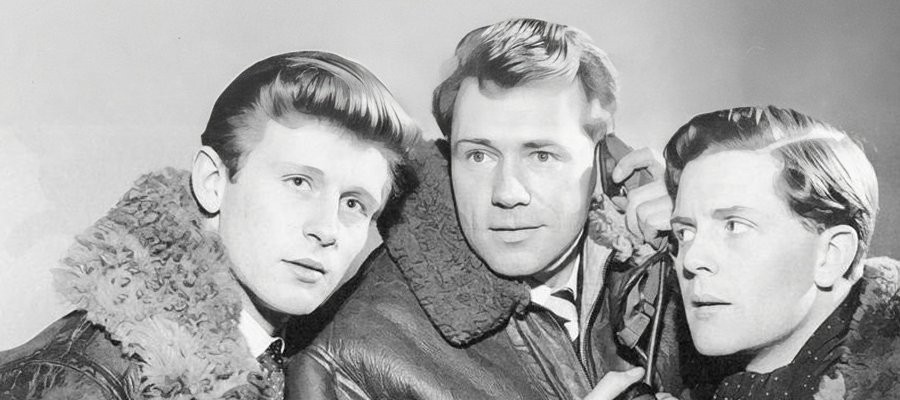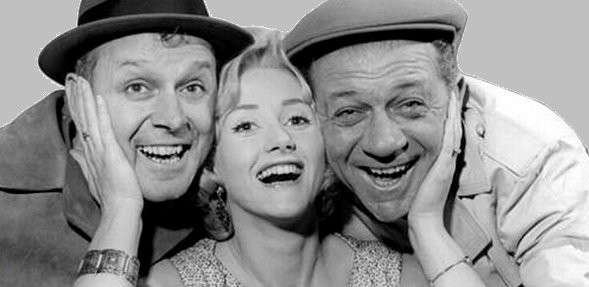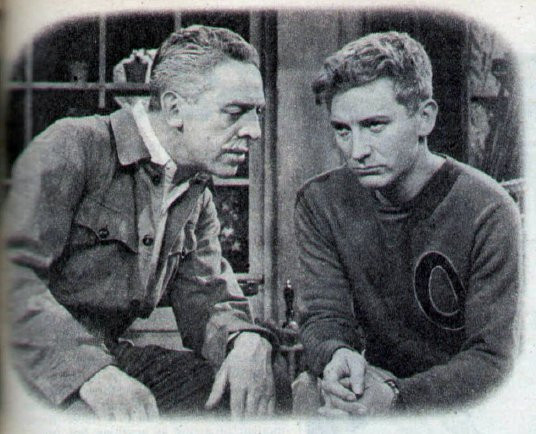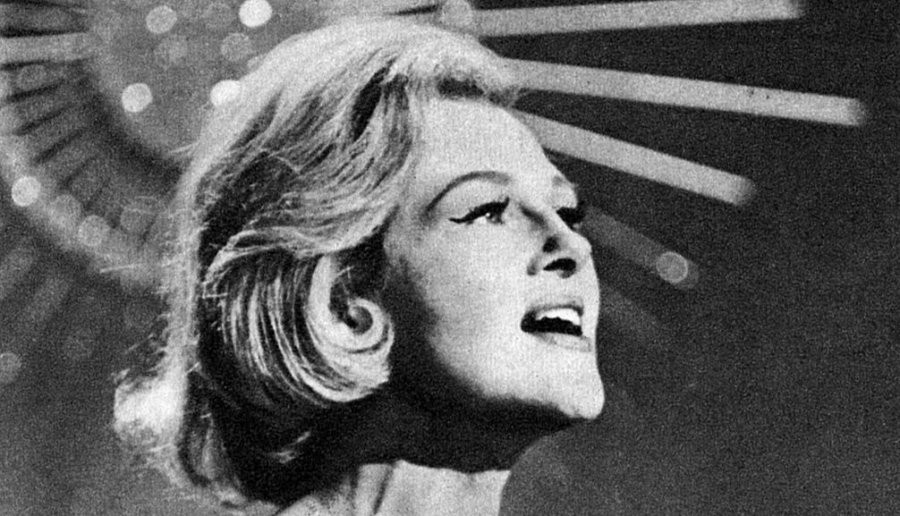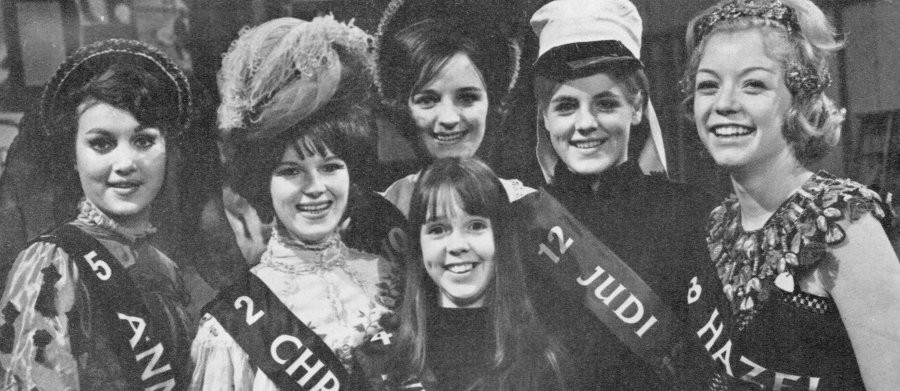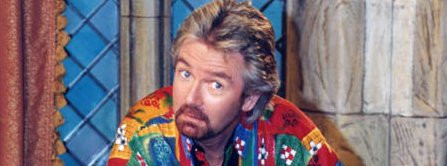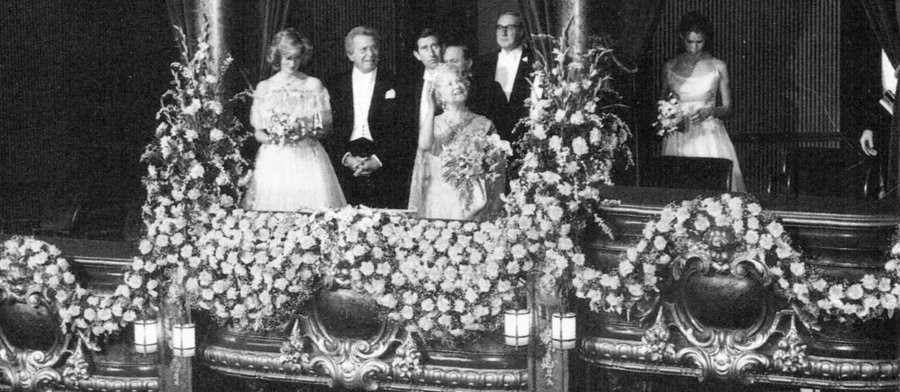
The Royal Variety Performance
1960 - United KingdomHistory should have recorded that the first Royal Variety Performance was performed in Edinburgh in July 1911 to coincide with the Coronation of King George V. Tragically, it records that the venue, the Empire Palace Theatre, burned to the ground some weeks earlier killing some of the performers who were due to take part. Understandably, the event was cancelled. It went ahead the following year but this time at The Palace Theatre, Shaftsbury Avenue, London, but would not establish itself as an annual event for another decade.
For those that accuse the Royal Variety Performance for going on too long, its worth pointing out that that first performance, actually called the Royal Music Hall Performance, in the presence of Their Majesties King George V and Queen Mary, listed no less than 142 artistes. These included many of music-halls greats such as Sir Harry Lauder, Lupino Lane, Harry Tate, Little Tich, Wilkie Bard, Harry Champion, George Robey, Vesta Tilley, Anna Pavlova and Harry Weldon. There was however, one noticeable absence. It was felt that some of the more risqué numbers that made up the repertoire of Marie Lloyd would not be suitable for the Royal audience, and so to save Their Majesties and the organisers any embarrassment, one of the greatest entertainers of that era was simply not invited. Instead, she held a rival performance in a nearby theatre, which she advertised as being 'by command of the British Public.'

In view of the previous year's tragedy it was decided to give the proceeds of the first Command Performance to the Variety Artistes Benevolent Fund, to help maintain Brinsworth House in Twickenham, England, a nursing home for retired performers that had opened just twelve months previously, establishing a tradition that has remained ever since. This first staging was a lavish occasion; the theatre was decorated with 3 million roses, which were draped around the auditorium and over the boxes. But as lavish as it was, that was the last Royal Variety until 1919 when it was next performed at the London Coliseum and Harry Marlow, a one-time comedian who was now running Brinsworth House, thought of instituting an annual 'Royal Variety' beginning the cycle in 1921 with only occasional gaps up to and during the War. The show returned as an annual event in 1945 with just one interruption since, in 1956, the year of the Suez crisis.
The line-up for 1956 included Gracie Fields, Liberace, the Crazy Gang, and Winifred Atwell. Laurence Olivier, Vivien Leigh and John Mills had rehearsed a version of Fred Astaire's Top Hat number and as a finale the entire cast were going to dress in Liberace suits. Then, four hours before the performance was due to start the organiser, Val Parnell, received a call from Buckingham Palace to say that because of the landing at Suez and the fighting, it was felt that it would be inappropriate for the royal party to attend. The entire performance was cancelled.
By 1958, Parnell felt that he had had enough of organising the show and handed over the reins to the man who was his first lieutenant for that aborted 1956 show, Bernard Delfont. For his first performance, Delfont decided to concentrate more on home-grown talent so out went a lot of the international headliners and in came the likes of Roy Castle, Max Bygraves, Harry Secombe and an entertainer who would make the London Palladium stage almost his own; Bruce Forsyth. "We were into the age of television and the public expected the Royal Variety to recognise the fact by making room for TV names like Charlie Drake, Bernard Bresslaw, David Nixon and Bruce Forsyth" Delfont wrote in his autobiography 'East End, West End'. However, it would be another two years before the show was actually televised.

In 1960 the television cameras were allowed to be present at a Royal Variety Performance for the first time. Until the end of the 1950s theatre owners were concerned that too much exposure would deter audiences from going to see live variety. But as music hall continued to decline it was actually thought that television might reverse the fortunes of music hall and revive interest in the real thing. So, in 1960 Lew Grade at ATV snapped up the exclusive rights for the Royal Show. The programme was presented on Sunday 22nd May 1960 across the entire ITV network. The two-and-a-half-hour production, under Jack Hylton, starred comedians Harry Worth, Charlie Drake and Benny Hill, pop singers Cliff Richard and Adam Faith, US actor Robert Horton and the flamboyant pianist Liberace, among the sixty or so top-line entertainers. When it went out it was quite clear that the commercial channel had a huge hit on their hands. The following year, after ITV televised the show again and had another smash hit with it, an enormous row erupted with the BBC. Delfont was accused of nepotism; Lew Grade was his brother, and the BBC, who up to that point had shown no interest in the show claimed that ATV would never have got the TV rights had the two not been related. Many other critics saw this as yet another example of the Winogradsky family trying to monopolise the British entertainment industry. Delfont backed down and agreed that each channel should televise the show on an alternate basis. The BBC agreed but Lew Grade was livid.
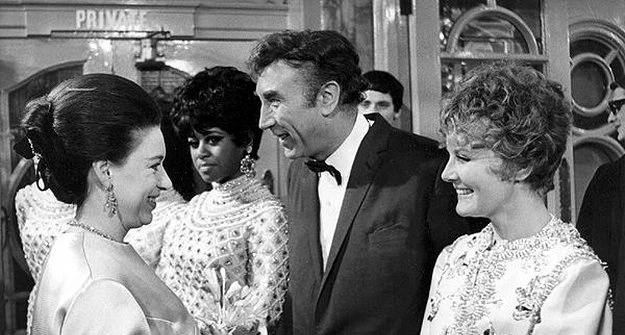
The next landmark for the show came in 1976 when it was broadcast on television live for the first time. But the show was beset with problems. A mike was knocked over in the opening number, the lights went out on ventriloquist Roger de Courcey and a sound fault allowed the orchestra to drown out the voice of impressionist Mike Yarwood. In spite of a trouble free live show the following year the decision was taken to record the show and broadcast the edited highlights from 1978 onwards. That 1978 show was the last for Bernard Delfont who at the age of 69 decided he didn't need the aggravation of organising it any more. The job was passed on to Louis Benjamin while Delfont became Life President for the fund, which by now he had renamed the Variety Artistes Benevolent Fund to cover artistes from all spheres of entertainment.
"Every Royal Variety is controlled chaos" wrote Bernard Delfont. "Just think of it; more than twenty acts and countless ensembles to meld together and less than two days to do it." Timing, Delfont soon discovered was crucial to the success of the show, otherwise the planned two-and-a-half hours can seriously overrun. Once the show starts the producers are very much in the hands of the artistes themselves. The record for overrunning is held by Ken Dodd who came on to do a 12-minute routine but stayed on for forty. There's also the time that Max Miller outstayed his welcome. As he came of the stage Val Parnell stormed at him "you'll never work again in one of my theatres!" To which Miller replied, "Val, you're about four hundred thousand pounds too late!"
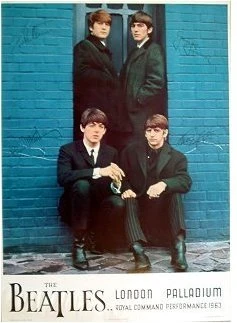
Egos aside, many entertainers see the royal performance as the pinnacle of their career and to be invited to appear before royalty is still considered an immense privilege. One of the most famous shows was in 1963 when The Beatles were invited to appear. Delfont had not heard of the group but his daughter was a fan and kept pestering her father to book them. Delfont found out that the group were appearing at one of his bookings at the Princes Theatre, Torquay, so he phoned up the box office to enquire how business was.
"We're sold out," said the manager. "There are fans sleeping on the street waiting for returns."
Delfont immediately booked the group for the Royal Variety which was still some months away. As November neared the Beatles phenomenon reached fever pitch and by the time they appeared on the show the group were the biggest names in show business. This upset Merlene Dietrich who was booked on the same bill. The actress thought she should take star billing and whenever photographers gathered to take pictures of the Beatles she would muscle her way in. She even tried to win favour with the orchestra by buying them two crates of champagne. But ultimately she was upstaged by John Lennon who, during the group's performance, made headlines by telling the audience "those of you in the cheaper seats clap your hands" then with a cheeky side-glance to the Royal Box he added, "the rest of you just rattle your jewellery."
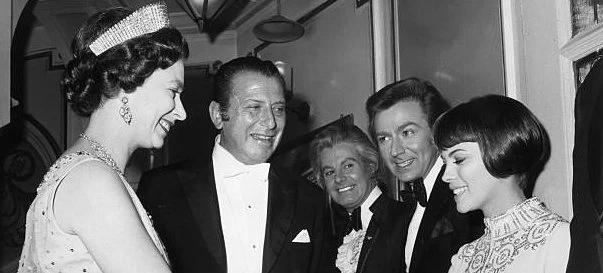
Royal protocol was always tested in the show from time to time and although indirect references were made to the royal party they were never pushed too far. And when TV cameras were introduced they were not allowed to film the reaction from the royal box. The Queen, or whoever was in attendance that particular year would be seen arriving at the theatre, taking her or his seat in the royal box, leaving at the end and then being introduced to the performers who stood respectfully in line. Tommy Steele was another performer who extended the limits of acceptability at a Royal Command by asking the audience to clap along to one of his songs. Harmless enough one would have thought, but audience participation had never been a part of a royal show prior to this. It wasn't until the Queen Mother leant forward in her box to lead the way that the audience felt comfortable enough to join in.
French star Maurice Chevalier was the first person to directly sing to the royal guest when he announced that he would do a rendition of 'You Must Have Been A Beautiful Baby' to the Queen Mother, as Bernard Delfont remembered in 'East End, West End':
"You can't do it," I pleaded. "It could be very embarrassing."
He gave me a friendly squeeze on my arm. "You must not worry. The way I do it will be fine. I promise."
His squeeze tightened. "I will do it," he said in a tone which suggested that if I did not agree he might walk out.
I went on arguing for half an hour but in the end I had to take a chance on Gallic charm. The gamble paid off. In the climax to his act, Maurice Chevalier turned to the royal box, went down on one knee and sang the entire song finishing with "You must have been a beautiful baby, cos Majesty look at you now."
I held my breath. So did the audience. The Queen Mother smiled and led the applause. The audience went wild."
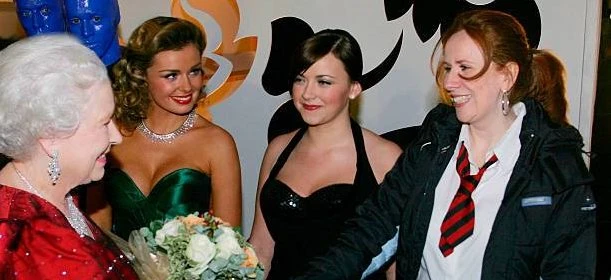
In 2005 the comedienne Catherine Tate pushed the barriers further than any artiste before. In the guise of her mouthy teenage character Lauren, a schoolgirl with a tendency to confront authority figures, during a sketch she asked the Queen: "Are you disrespecting me?"
When a co-star warned the TV comic "she can have you beheaded", Lauren replied: "I don't even care, 'cos I don't even need it."
Looking towards the Queen, she added: "Is one bothered? Is one's face bothered?"
The Queen's reaction was captured on camera. She smiled politely, while the Duke of Edinburgh chuckled at the joke. However, some critics were not amused.
Still as popular today as it ever was Royal Variety Performance has become an annual entertainment institution. And although it does not always get an easy time with the critics the show provides worldwide exposure for its performers, and provides cash for the EABF. For the both the live and TV audience, it is a chance to be entertained by Royal Command.
Seen this show? How do you rate it?
Seen this show? How do you rate it?
Published on January 25th, 2019. Written by Laurence Marcus (12 February 2006) for Television Heaven.


